Midweek Review
A dilemma like no other!
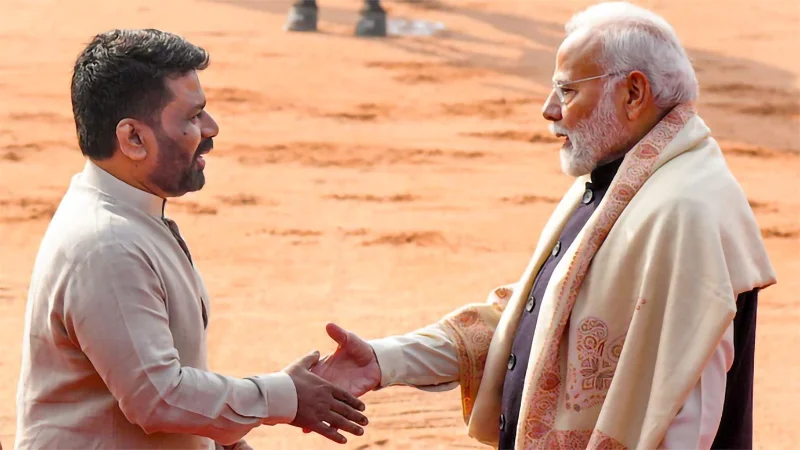
Two contentious issues that may never be resolved are disagreement between India and Sri Lanka over granting police and land powers to Provincial Councils, arm twisted by New Delhi into establishing them here along with the signing of the Indo-Lanka Accord following the infamous parippu drop over the North in 1987 and organized poaching by Tamil Nadu fishers, a problem that can be addressed only by India deploying its powerful Coast Guard, backed by the Navy, to prevent violation of Indo-Lanka maritime boundary.
By Shamindra Ferdinando
Sri Lanka is in a tight spot. Joint statements issued by India and Sri Lanka on Dec, 16, last year, and China and Sri Lanka on January 16, this year, following President Anura Kumara Dissanayake’s state visits to New Delhi and Beijing, respectively, underscored the daunting foreign policy challenges faced by the new Sri Lankan leader whose National People’s Power (NPP) secured a landslide victory at the Nov. 2024 parliamentary election, promising a literal sea change.
Dissanayake is also the leader of the Janatha Vimukthi Peramuna (JVP), a once rabidly anti-Indian political movement that waged two unsuccessful insurrections, in 1971 and 1987-1990. Under the JVP’s leadership, the NPP was formed in 2019, just ahead of that year’s presidential election.
Against the backdrop of an unprecedented political environment that had been created by the routing of existing major parties and the emergence of the NPP as the dominant political force here, the Asian giants are determined to consolidate their own separate position here. The joint statements emphasized their agenda.
The issues at hand cannot be examined without taking into consideration the strong and growing US-India relationship, in spite of the latter playing safe in the Russia-Ukraine war and the US-China conflict, as well as the US and India teaming up against Beijing. It appears, however, neither the US nor India trust each other. Their game plan is to try use the other for one’s own benefit in their current marriage of convenience. Washington, without doubt, considers both China and India are a threat to US hegemony.
Whether hapless Sri Lanka likes it or not, or regardless who wields political power here, the major powers won’t change their strategies. That is the unpleasant reality.
In the wake of President Dissanayake’s four-day visit to Beijing (January 14 to 17), a section of the Opposition engaged in the usual criticism of the NPP government, though they generally remained silent on the outcome of his New Delhi visit. China and India dominate major political parties represented in Parliament and the continuing political-economic-social turmoil facilitated their agenda. Our treacherous political party system is obviously incapable of addressing developing challenges. They have pathetically failed to reach consensus on national response to external interventions thereby allowing major powers to manipulate the country.
Having perused the two joint statements, the writer is of the view that in spite of Sri Lanka being party to both, they are contradictory and seem unrealistic to a certain extent. The bottom line is Sri Lanka cannot play ball simultaneously with China and India suspicious of each other. They are hell-bent on undermining each other and Sri Lanka is caught up in an utterly dangerous game. Sri Lanka is stuck in the China-India conflict and obviously there is no way out. Whatever Sri Lanka does may antagonize either party and Colombo seems helpless. The joint statements highlight Sri Lanka’s predicament. Nothing can be as absurd as Sri Lanka declaring a shared future with both India and China. In fact, the 34-point Indo-Lanka joint statement was headlined ‘Fostering partnerships for a shared future.’
While India based its relationship with Sri Lanka on the basis of Premier Narendra Modi’s ‘Neighborhood First Policy’ (read India first policy) and ‘SAGAR’ vision (Security and growth for all in the Indian Ocean region) meaning our giant neighbour is primus inter pares, China focused on what the joint statement described as deepening traditional friendship and advancing high-quality Belt and Road cooperation widely discussed as a massive China-led infrastructure project.
But unlike China, India being our giant neighbour she is overbearing and it would be wise of us to handle India with extreme care. Therefore allowing her to have a monopoly position in any part of our economy is asking for trouble to say the least.
Launched in 2013 the China project is also known as ‘Belt and Road Initiative’ (BRI) and ‘New Silk Road.’ The US and its allies are strongly opposed to the Chinese project, originally called ‘One Belt One Road’.
India strongly opposes any Chinese initiative here hence the joint statement issued following President Dissanayake’s visit must have disappointed New Delhi greatly. The truth is that the statement from Beijing questions the very basis of the joint statement issued on Dec. 16th last year. Regardless of Western and Indian pressure, Beijing has constantly advanced its own project here and elsewhere.
India’s main grouse is the sea and land-based China-Pakistan Economic Corridor (CPEC) that may give China a strategic advantage over India.
Key points in Jan. 16 statement
President Dissanayake’s delegation to Beijing included two Ministers – Foreign Affairs, Foreign Employment and Tourism Vijitha Herath, and Transport, Highways, Ports and Civil Aviation Minister and Leader of the House Bimal Rathnayake. Both are senior JVPers who stood by Dissanayake during the internal turmoil within that party during Mahinda Rajapaksa’s tenure as the President (2005-2014).
President Dissanayake met President Xi Jinping, Premier of the State Council Li Qiang and Chairman of the Standing Committee of the National People’s Congress Zhao Leji.
In line with the overall Chinese approach, their focus was on Belt and Road cooperation. Against that background, the joint statement emphasized the pivotal importance of advancing what the Chinese called ‘high quality Belt and Road cooperation.’
They reiterated unwavering commitment to what the joint statement described as expanding China-Sri Lanka strategic cooperative partnership.
Then they also decided to sustain ‘close high-level exchanges in keeping with ‘strong strategic guidance’ given by the Chinese and Sri Lankan leaders.’
Sri Lanka repeated its longstanding commitment for ‘One-China’ policy or principle in line with the United Nations general assembly Resolution 2758 passed on Oct. 25th, 1971. In other words, that Resolution accepted Taiwan as an inalienable part of China. It would be pertinent to mention that India, too, accepted the ‘One-China’ principle but over the years refrained from reiterating its position. According to the joint statement, Sri Lanka fully backed all efforts by China to achieve national reunification.
Sri Lanka also assured that the country wouldn’t be a platform for anti-China activity and also backed Beijing in respect of issues related to Xizang (Tibet) and the predominantly Muslim Xinjiang regions where China is under Western fire over purported human rights violations.
The UN that often echo Western line saw its Human Rights Chief Volker Turk jumped to criticise Chinese actions in the above-mentioned regions and the Chinese alleged that the UNHRC strategy is meant to undermine China.
In the fifth paragraph of the joint statement with Colombo that dealt with the contentious Xizang and Xinjiang issues, China reiterated its ‘commitment to an independent foreign policy of peace’ whereas Sri Lanka repeated its pledge for ‘an independent non-aligned foreign policy.’
Having been trapped in Chinese, Indian and Western machinations, declaration of ‘an independent non-aligned foreign policy, ‘seemed ridiculous.
The focus on Belt and Road cooperation was underscored with Sri Lanka’s acceptance of President Jinping’s flagship project key to economic and social development. Therefore, the reiteration of the pivotal importance of the Colombo Port City and Hambantota Port, both built by China, didn’t surprise anyone. However, eyebrows were raised that China and Sri Lanka entered into a Belt and Road cooperation plan meant to upgrade/strengthen the Chinese flagship project.
Once Gotabaya Rajapaksa told the writer how Indian National Security Advisor (NSA) Ajit Doval pressed him to cancel major Chinese projects here. Responding to queries raised by the writer in Dec., 2016, Gotabaya Rajapaksa explained the dissimilarity between Doval and his predecessor Shivshankar Menon (January 2010 to May 2014) who had served as Foreign Secretary before receiving the appointment as NSA.
The former Defence Secretary said Menon, in his memoirs, Choices: Inside the Making of India’s Foreign Policy had acknowledged the understanding between the Mahinda Rajapaksa government and India during the war and post-conflict period. However, Menon’s successor Ajit Doval had taken an entirely different stand vis-a-vis Sri Lanka, Rajapaksa said.
Rajapaksa said Doval called for the cancellation of the USD 1.4 bn Chinese flagship project, the Colombo Port City. In addition to that demand which Rajapaksa said was very unfair, India demanded that Sri Lanka take over the Colombo International Container Terminals Limited (CICT), a joint venture between China Merchants Port Holdings Company Limited (CMPH) and the Sri Lanka Ports Authority (SLPA).
CMPH holds 85% of the partnership whilst the balance 15% is with the SLPA.
Rajapaksa quoted Doval as having told him that India wanted all Chinese funded infrastructure projects stopped and for Sri Lanka to have full control of the Hambantota Port. Rajapaksa quoted Doval as having told him: “Sri Lanka is a small country, you don’t need such development projects.”
Maritime issues, etc.
In addition to Sri Lanka seeking early implementation with China of what the joint statement called an agreed debt restructuring plan and early conclusion of a comprehensive free trade agreement, they dealt with maritime cooperation. They agreed to conduct regular bilateral consultations on maritime matters.
China and Sri Lanka decided to sign a Memorandum of Understanding (MoU) on Ocean Cooperation to pave the way for what the joint communique called Blue Partnership. The Blue Partnership is obviously an integral part of the Belt and Road Cooperation.
The joint statement conveniently refrained from making reference to the contentious issue of Chinese research vessels’ visit to Sri Lanka. Repeated Indian and US protests during the early phase of Ranil Wickremesinghe’s presidency (2022 July-Nov 2024) compelled the beleaguered leader to declare a moratorium on such foreign vessels. That decision was meant to prevent Chinese research vessels entering Sri Lankan waters. The Indian media had routinely categorized all Chinese research vessels as spy ships.
President Dissanayake’s government is yet to announce its stand on Wickremesinghe’s moratorium on such foreign ship visits. In spite of Minister Vijitha Herath’s declaration on Dec., 20, 2024, that a special committee would be established to implement a national policy in respect of foreign vessels seeking to enter Sri Lankan waters nothing has been heard so far of the proposed committee.
Regardless of repeated assurances that Sri Lankan territory won’t be used against India’s security interests, the Modi government is seriously concerned over Chinese moves here. India hardened its stance after the Yahapalana government (2015 January to 2019 November) leased the strategically located Hambantota Port on a 99-year lease to China in 2017. That increased Indian concerns as China consolidated its position here. It would be pertinent to mention that China secured what it wanted in spite of the Yahapalana government initially taking an extremely hostile position towards Beijing. The Yahapalana government went to the extent of suspending the Colombo Port City project in March 2015. But, China Communication Construction Company (CCCC) resumed the project in August 2016 after China and Sri Lanka settled differences over the project that was finalized in Sept. 2014 in the presence of President Jinping in Colombo.
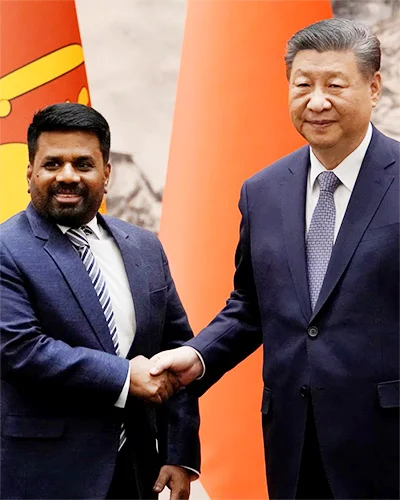
Chinese leader Jinping with President Dissanayake
In addition to the USD 1.4 ban Colombo Port City project, China invested USD 1.2 bn in the Hambantota Port. But, President Disanayake’s Office claimed that it secured a fresh investment of USD 3.7 bn for a state-of-the-art oil refinery in Hambantota. That investment declared as the single largest FDI by the President’s Office is part of the Belt and Road cooperation.
However, the UNP has challenged the President’s claim, emphasizing that the agreement on an oil refinery with China was finalized in Nov. 2023 by President Wickremesinghe’s administration.
According to the UNP, Sri Lanka reached consensus on Chinese investment due to the delay in construction undertaken by a consortium that included Silver Park International (Private) Limited of Singapore (controlled by India’s Accord Group) and Oman’s Ministry of Oil and Gas. Interestingly, that agreement had been signed in March 2019 during Maithripala Sirisena’s presidency.
China hasn’t allowed domestic politics here to derail their plans. The Chinese strategy is on track. The Hambantota Port agreement and the proposed oil refinery at Mirijjawila are cases in point. Having signed a deal on the construction of a brand new international port at Hambantota during Mahinda Rajapaksa’s presidency, China secured the port for a mere USD 1.2 bn from the Wickremesinghe regime.
Later President Gotabaya Rajapaksa found fault with the Yahapalana administration for leasing the port to China. Declaring that the leasing of the Hambantota Port was a mistake, Gotabaya Rajapaksa, in his first interview as President with Nitin A. Gokhale, Editor-in-Chief of Bharat Shakti.in and SNI, in late Nov. 2019, said he wanted to renegotiate the deal. The Yahapalana deal covered the port and approximately 15,000 acres around it. China simply dismissed that notion about an agreement concluded with the previous Yahapalana regime. Since then no one dared to take up that issue. China obviously intends to consolidate its position in the South around Hambantota, just as India tightens its grip around Northeast Sri Lanka, which includes the world’s fourth largest natural harbour at Trincomalee earlier coveted by the US.
Post-Aragalaya developments
In the run-up to the presidential election last Sept, India indicated what it desired from the new President. On behalf of India, Pathfinder Foundation presented a comprehensive proposal meant to consolidate Indo-Lanka partnership to all presidential candidates.
During President Disanayake’s visit, India built up on the agreement Premier Modi finalized with President Wickremesinghe in July 2023. Like China, India, too, since the successful conclusion of the war in 2009, advanced its strategy, here, meticulously.
However, China never matched Indian financial assistance during the unprecedented crisis here. India provided assistance posthaste. According to Premier Modi, India extended grants and Lines of Credit worth USD 5 bn to Sri Lanka during the presidencies of Gotabaya Rajapaksa and Ranil Wickremesinghe. In fact, NPP leader Disanayake in the run-up to the presidential election thanked India for unprecedented assistance provided in the hour of Sri Lanka’s need.
New Delhi also paid USD 20.66 mn to settle payments due from Sri Lanka for Indian projects here completed under operational Lines of Credit.
A major difference between India-Sri Lanka joint statement and China-Sri Lanka communique is the former’s focus on defence relations. During a joint media briefing with President Dissanayake in New Delhi Premier Modi declared that he and President Dissanayake decided to quickly finalize the Security Cooperation Agreement. However, the Indo-Lanka joint statement differed from Premier Modi’s declaration in respect of the proposed Security Cooperation Agreement.
According to the joint communique, India and Sri Lanka agreed to explore the possibility of concluding a framework agreement on defence cooperation. Under a section headlined ‘Strategic & Defence Cooperation’, the communique dealt comprehensively with Sri Lanka’s needs. India addressed the issues at hand while assuring backing for defence needs. But, entering into a Security Cooperation Agreement /Defence Cooperation Agreement as mentioned in the joint communique, cannot under any circumstances be taken by the government without having consensus with all political parties represented in Parliament.
India’s offer should be examined keeping in mind Sri Lanka never sought a defence agreement with any particular country, even during the difficult war to defeat LTTE terrorism that lasted for about 30 years, but somehow procured arms, ammunition and equipment as well as training from a wide range of suppliers, including China, Israel, Pakistan, Czechoslovakia, Ukraine as well as Russia. The matter is definitely bone of contention for obvious reasons.
Although India caused terrorism here in the ’80s and should be held responsible for massive death and destruction caused, the war couldn’t have been brought to a successful conclusion without New Delhi’s silent, but invaluable backing to defeat the LTTE during the final Eelam War (2006 Aug. to 2009 May). That is the hard truth. Many people may find that hard to accept. With the LTTE getting too big for its shoes, with subtle backing from the West, especially by turning a blind eye to its terror infrastructure like drug running and arms smuggling from their countries, India, too, was left with no other option, especially after it daringly assassinated its beloved former Premier Rajiv Gandhi on its own soil.
Features
Handunnetti and Colonial Shackles of English in Sri Lanka
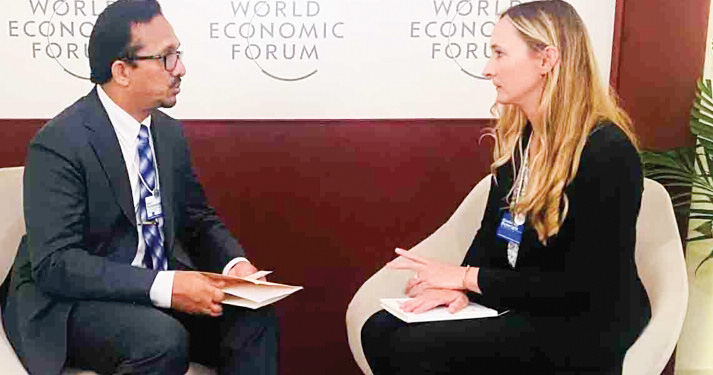
“My tongue in English chains.
I return, after a generation, to you.
I am at the end
of my Dravidic tether
hunger for you unassuaged
I falter, stumble.”
– Indian poet R. Parthasarathy
 When Minister Sunil Handunnetti addressed the World Economic Forum’s ‘Is Asia’s Century at Risk?’ discussion as part of the Annual Meeting of the New Champions 2025 in June 2025, I listened carefully both to him and the questions that were posed to him by the moderator. The subsequent trolling and extremely negative reactions to his use of English were so distasteful that I opted not to comment on it at the time. The noise that followed also meant that a meaningful conversation based on that event on the utility of learning a powerful global language and how our politics on the global stage might be carried out more successfully in that language was lost on our people and pundits, barring a few commentaries.
When Minister Sunil Handunnetti addressed the World Economic Forum’s ‘Is Asia’s Century at Risk?’ discussion as part of the Annual Meeting of the New Champions 2025 in June 2025, I listened carefully both to him and the questions that were posed to him by the moderator. The subsequent trolling and extremely negative reactions to his use of English were so distasteful that I opted not to comment on it at the time. The noise that followed also meant that a meaningful conversation based on that event on the utility of learning a powerful global language and how our politics on the global stage might be carried out more successfully in that language was lost on our people and pundits, barring a few commentaries.
Now Handunnetti has reopened the conversation, this time in Sri Lanka’s parliament in November 2025, on the utility of mastering English particularly for young entrepreneurs. In his intervention, he also makes a plea not to mock his struggle at learning English given that he comes from a background which lacked the privilege to master the language in his youth. His clear intervention makes much sense.
The same ilk that ridiculed him when he spoke at WEF is laughing at him yet again on his pronunciation, incomplete sentences, claiming that he is bringing shame to the country and so on and so forth. As usual, such loud, politically motivated and retrograde critics miss the larger picture. Many of these people are also among those who cannot hold a conversation in any of the globally accepted versions of English. Moreover, their conceit about the so-called ‘correct’ use of English seems to suggest the existence of an ideal English type when it comes to pronunciation and basic articulation. I thought of writing this commentary now in a situation when the minister himself is asking for help ‘in finding a solution’ in his parliamentary speech even though his government is not known to be amenable to critical reflection from anyone who is not a party member.
The remarks at the WEF and in Sri Lanka’s parliament are very different at a fundamental level, although both are worthy of consideration – within the realm of rationality, not in the depths of vulgar emotion and political mudslinging.
The problem with Handunnetti’s remarks at WEF was not his accent or pronunciation. After all, whatever he said could be clearly understood if listened to carefully. In that sense, his use of English fulfilled one of the most fundamental roles of language – that of communication. Its lack of finesse, as a result of the speaker being someone who does not use the language professionally or personally on a regular basis, is only natural and cannot be held against him. This said, there are many issues that his remarks flagged that were mostly drowned out by the noise of his critics.
Given that Handunnetti’s communication was clear, it also showed much that was not meant to be exposed. He simply did not respond to the questions that were posed to him. More bluntly, a Sinhala speaker can describe the intervention as yanne koheda, malle pol , which literally means, when asked ‘Where are you going?’, the answer is ‘There are coconuts in the bag’.
He spoke from a prepared text which his staff must have put together for him. However, it was far off the mark from the questions that were being directly posed to him. The issue here is that his staff appears to have not had any coordination with the forum organisers to ascertain and decide on the nature of questions that would be posed to the Minister for which answers could have been provided based on both global conditions, local situations and government policy. After all, this is a senior minister of an independent country and he has the right to know and control, when possible, what he is dealing with in an international forum.
This manner of working is fairly routine in such international fora. On the one hand, it is extremely unfortunate that his staff did not do the required homework and obviously the minister himself did not follow up, demonstrating negligence, a want for common sense, preparedness and experience among all concerned. On the other hand, the government needs to have a policy on who it sends to such events. For instance, should a minister attend a certain event, or should the government be represented by an official or consultant who can speak not only fluently, but also with authority on the subject matter. That is, such speakers need to be very familiar with the global issues concerned and not mere political rhetoric aimed at local audiences.
Other than Handunnetti, I have seen, heard and also heard of how poorly our politicians, political appointees and even officials perform at international meetings (some of which are closed door) bringing ridicule and disastrous consequences to the country. None of them are, however, held responsible.
Such reflective considerations are simple yet essential and pragmatic policy matters on how the government should work in these conditions. If this had been undertaken, the WEF event might have been better handled with better global press for the government. Nevertheless, this was not only a matter of English. For one thing, Handunnetti and his staff could have requested for the availability of simultaneous translation from Sinhala to English for which pre-knowledge of questions would have been useful. This is all too common too. At the UN General Assembly in September, President Dissanayake spoke in Sinhala and made a decent presentation.
The pertinent question is this; had Handunetti had the option of talking in Sinhala, would the interaction have been any better? That is extremely doubtful, barring the fluency of language use. This is because Handunnetti, like most other politicians past and present, are good at rhetoric but not convincing where substance is concerned, particularly when it comes to global issues. It is for this reason that such leaders need competent staff and consultants, and not mere party loyalists and yes men, which is an unfortunate situation that has engulfed the whole government.
What about the speech in parliament? Again, as in the WEF event, his presentation was crystal clear and, in this instance, contextually sensible. But he did not have to make that speech in English at all when decent simultaneous translation services were available. In so far as content was concerned, he made a sound argument considering local conditions which he knows well. The minister’s argument is about the need to ensure that young entrepreneurs be taught English so that they can deal with the world and bring investments into the country, among other things. This should actually be the norm, not only for young entrepreneurs, but for all who are interested in widening their employment and investment opportunities beyond this country and in accessing knowledge for which Sinhala and Tamil alone do not suffice.
As far as I am concerned, Handunetti’s argument is important because in parliament, it can be construed as a policy prerogative. Significantly, he asked the Minister of Education to make this possible in the educational reforms that the government is contemplating.
He went further, appealing to his detractors not to mock his struggle in learning English, and instead to become part of the solution. However, in my opinion, there is no need for the Minister to carry this chip on his shoulder. Why should the minister concern himself with being mocked for poor use of English? But there is a gap that his plea should have also addressed. What prevented him from mastering English in his youth goes far deeper than the lack of a privileged upbringing.
The fact of the matter is, the facilities that were available in schools and universities to learn English were not taken seriously and were often looked down upon as kaduwa by the political spectrum he represents and nationalist elements for whom the utilitarian value of English was not self-evident. I say this with responsibility because this was a considerable part of the reality in my time as an undergraduate and also throughout the time I taught in Sri Lanka.
Much earlier in my youth, swayed by the rhetoric of Sinhala language nationalism, my own mastery of English was also delayed even though my background is vastly different from the minister. I too was mocked, when two important schools in Kandy – Trinity College and St. Anthony’s College – refused to accept me to Grade 1 as my English was wanting. This was nearly 20 years after independence. I, however, opted to move on from the blatant discrimination, and mastered the language, although I probably had better opportunities and saw the world through a vastly different lens than the minister. If the minister’s commitment was also based on these social and political realities and the role people like him had played in negating our English language training particularly in universities, his plea would have sounded far more genuine.
If both these remarks and the contexts in which they were made say something about the way we can use English in our country, it is this: On one hand, the government needs to make sure it has a pragmatic policy in place when it sends representatives to international events which takes into account both a person’s language skills and his breadth of knowledge of the subject matter. On the other hand, it needs to find a way to ensure that English is taught to everyone successfully from kindergarten to university as a tool for inclusion, knowledge and communication and not a weapon of exclusion as is often the case.
This can only bear fruit if the failures, lapses and strengths of the country’s English language teaching efforts are taken into cognizance. Lamentably, division and discrimination are still the main emotional considerations on which English is being popularly used as the trolls of the minister’s English usage have shown. It is indeed regrettable that their small-mindedness prevents them from realizing that the Brits have long lost their long undisputed ownership over the English language along with the Empire itself. It is no longer in the hands of the colonial masters. So why allow it to be wielded by a privileged few mired in misplaced notions of elitism?
Features
Finally, Mahinda Yapa sets the record straight

Clandestine visit to Speaker’s residence:
Finally, former Speaker Mahinda Yapa Abeywardena has set the record straight with regard to a controversial but never properly investigated bid to swear in him as interim President. Abeywardena has disclosed the circumstances leading to the proposal made by external powers on the morning of 13 July, 2022, amidst a large scale staged protest outside the Speaker’s official residence, situated close to Parliament.
Lastly, the former parliamentarian has revealed that it was then Indian High Commissioner, in Colombo, Gopal Baglay (May 2022 to December 2023) who asked him to accept the presidency immediately. Professor Sunanda Maddumabandara, who served as Senior Advisor (media) to President Ranil Wickremesinghe (July 2022 to September 2024), disclosed Baglay’s direct intervention in his latest work, titled ‘Aragalaye Balaya’ (Power of Aragalaya).
Prof. Maddumabandara quoted Abeywardena as having received a startling assurance that if he agreed to accept the country’s leadership, the situation would be brought under control, within 45 minutes. Baglay had assured Abeywardena that there is absolutely no harm in him succeeding President Gotabaya Rajapaksa, in view of the developing situation.
The author told the writer that only a person who had direct control over the violent protest campaign could have given such an assurance at a time when the whole country was in a flux.
One-time Vice Chancellor of the Kelaniya University, Prof. Maddumabandara, launched ‘Aragalaye Balaya’ at the Sri Lanka Foundation on 20 November. In spite of an invitation extended to former President Gotabaya Rajapaksa, the ousted leader hadn’t attended the event, though UNP leader Ranil Wickremesinghe was there. Maybe Gotabaya felt the futility of trying to expose the truth against evil forces ranged against them, who still continue to control the despicable agenda.
Obviously, the author has received the blessings of Abeywardena and Wickremesinghe to disclose a key aspect in the overall project that exploited the growing resentment of the people to engineer change of Sri Lankan leadership.
The declaration of Baglay’s intervention has contradicted claims by National Freedom Front (NFF) leader Wimal Weerawansa (Nine: The hidden story) and award-winning writer Sena Thoradeniya (Galle Face Protest: System change for anarchy) alleged that US Ambassador Julie Chung made that scandalous proposal to Speaker Abeywardena. Weerawansa and Thoradeniya launched their books on 25 April and 05 July, 2023, at the Sri Lanka Foundation and the National Library and Documentation Services Board, Independence Square, respectively. Both slipped in accusing Ambassador Chung of making an abortive bid to replace Gotabaya Rajapaksa with Mahinda Yapa Abeywardena.
Ambassador Chung categorically denied Weerawansa’s allegation soon after the launch of ‘Nine: The hidden story’ but stopped short of indicating that the proposal was made by someone else. Chung had no option but to keep quiet as she couldn’t, in response to Weerawansa’s claim, have disclosed Baglay’s intervention, under any circumstances, as India was then a full collaborator with Western designs here for its share of spoils. Weerawansa, Thoradeniya and Maddumabandara agree that Aragalaya had been a joint US-Indian project and it couldn’t have succeeded without their intervention. Let me reproduce the US Ambassador’s response to Weerawansa, who, at the time of the launch, served as an SLPP lawmaker, having contested the 2020 August parliamentary election on the SLPP ticket.
“I am disappointed that an MP has made baseless allegations and spread outright lies in a book that should be labelled ‘fiction’. For 75 years, the US [and Sri Lanka] have shared commitments to democracy, sovereignty, and prosperity – a partnership and future we continue to build together,” Chung tweeted Wednesday 26 April, evening, 24 hours after Weerawansa’s book launch.
Interestingly, Gotabaya Rajapaksa has been silent on the issue in his memoirs ‘The Conspiracy to oust me from Presidency,’ launched on 07 March, 2024.
What must be noted is that our fake Marxists, now entrenched in power, were all part and parcel of Aragalaya.
A clandestine meeting
Abeywardena should receive the appreciation of all for refusing to accept the offer made by Baglay, on behalf of India and the US. He had the courage to tell Baglay that he couldn’t accept the presidency as such a move violated the Constitution. In our post-independence history, no other politician received such an offer from foreign powers. When Baglay stepped up pressure, Abeywardena explained that he wouldn’t change his decision.
Maddumabandara, based on the observations made by Abeywardena, referred to the Indian High Commissioner entering the Speaker’s Official residence, unannounced, at a time protesters blocked the road leading to the compound. The author raised the possibility of Baglay having been in direct touch with those spearheading the high profile political project.
Clearly Abeywardena hadn’t held back anything. The former Speaker appeared to have responded to those who found fault with him for not responding to allegations, directed at him, by revealing everything to Maddumabandara, whom he described in his address, at the book launch, as a friend for over five decades.
At the time, soon after Baglay’s departure from the Speaker’s official residence, alleged co-conspirators Ven. Omalpe Sobitha, accompanied by Senior Professor of the Sinhala Faculty at the Colombo University, Ven. Agalakada Sirisumana, health sector trade union leader Ravi Kumudesh, and several Catholic priests, arrived at the Speaker’s residence where they repeated the Indian High Commissioner’s offer. Abeywardena repeated his previous response despite Sobitha Thera acting in a threatening manner towards him to accept their dirty offer. Shouldn’t they all be investigated in line with a comprehensive probe?
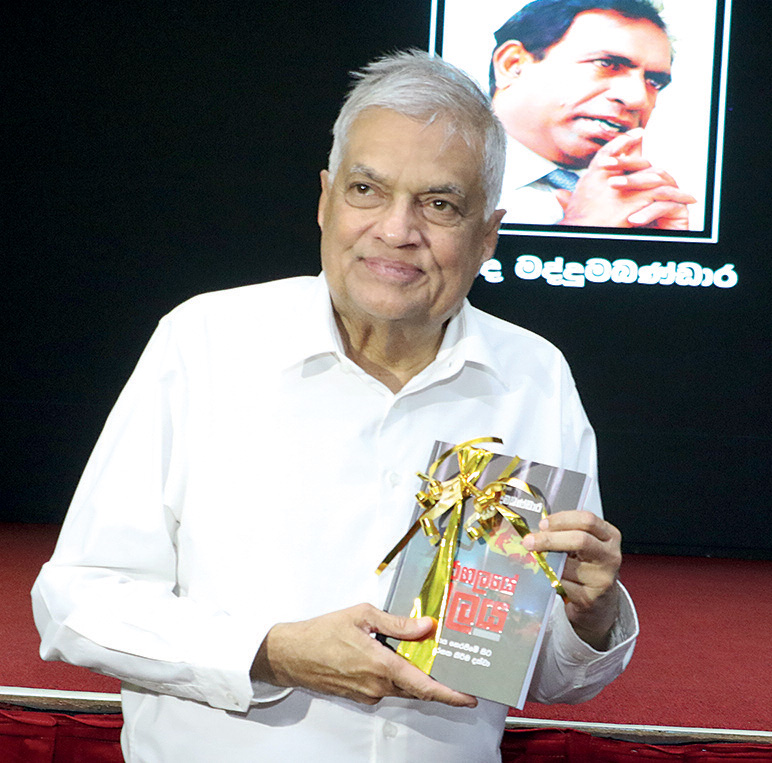
Ex-President Wickremesinghe with a copy of Aragalaye Balaya he received from its author, Prof. Professor Sunanda Maddumabandara, at the Sri Lanka Foundation recently (pic by Nishan S Priyantha)
On the basis of what Abeywardena had disclosed to him, Maddumabanadara also questioned the circumstances of the deployment of the elite Special Task Force (STF) contingent at the compound. The author asked whether that deployment, without the knowledge of the Speaker, took place with the intervention of Baglay.
Aragalaye Balaya
is a must read for those who are genuinely interested in knowing the unvarnished truth. Whatever the deficiencies and inadequacies on the part of the Gotabaya Rajapaksa administration, external powers had engineered a change of government. The writer discussed the issues that had been raised by Prof. Maddumabandara and, in response to one specific query, the author asserted that in spite of India offering support to Gotabaya Rajapaksa earlier to get Ranil Wickremesinghe elected as the President by Parliament to succeed him , the latter didn’t agree with the move. Then both the US and India agreed to bring in the Speaker as the Head of State, at least for an interim period.
If Speaker Abeywardena accepted the offer made by India, on behalf of those backing the dastardly US backed project, the country could have experienced far reaching changes and the last presidential election may not have been held in September, 2004.
After the conclusion of his extraordinary assignment in Colombo, Baglay received appointment as New Delhi’s HC in Canberra. Before Colombo, Baglay served in Indian missions in Ukraine, Russia, the United Kingdom, Nepal and Pakistan (as Deputy High Commissioner).
Baglay served in New Delhi, in the office of the Prime Minister of India, and in the Ministry of External Affairs as its spokesperson, and in various other positions related to India’s ties with her neighbours, Europe and multilateral organisations.
Wouldn’t it be interesting to examine who deceived Weerawansa and Thoradeniya who identified US Ambassador Chung as the secret visitor to the Speaker’s residence. Her high-profile role in support of the project throughout the period 31 March to end of July, 2022, obviously made her an attractive target but the fact remains it was Baglay who brought pressure on the then Speaker. Mahinda Yapa Abeywardena’s clarification has given a new twist to “Aragalaya’ and India’s diabolical role.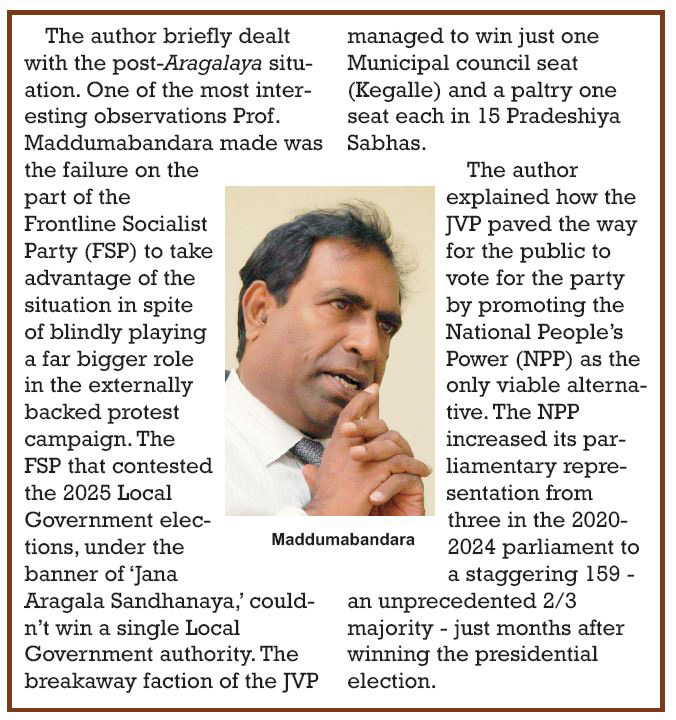
Absence of investigations
Sri Lanka never really wanted to probe the foreign backed political plot to seize power by extra-parliamentary means. Although some incidents had been investigated, the powers that be ensured that the overall project remained uninvestigated. In fact, Baglay’s name was never mentioned regarding the developments, directly or indirectly, linked to the devious political project. If not for Prof. Maddumabandara taking trouble to deal with the contentious issue of regime change, Baglay’s role may never have come to light. Ambassador Chung would have remained the target of all those who found fault with US interventions. Let me be clear, the revelation of Baglay’s clandestine meeting with the Speaker didn’t dilute the role played by the US in Gotabaya Rajapaksa’s removal.
If Prof. Maddumabandara propagated lies, both the author and Abeywardana should be appropriately dealt with. Aragalaye Balaya failed to receive the desired or anticipated public attention. Those who issue media statements at the drop of a hat conveniently refrained from commenting on the Indian role. Even Abeywardena remained silent though he could have at least set the record straight after Ambassador Chung was accused of secretly meeting the Speaker. Abeywardena could have leaked the information through media close to him. Gotabaya Rajapaksa and Ranil Wickremesinghe, too, could have done the same but all decided against revealing the truth.
A proper investigation should cover the period beginning with the declaration made by Gotabaya Rajapaksa’s government, in April 2022, regarding the unilateral decision to suspend debt repayment. But attention should be paid to the failure on the part of the government to decide against seeking assistance from the International Monetary Fund (IMF) to overcome the crisis. Those who pushed Gotabaya Rajapaksa to adopt, what they called, a domestic solution to the crisis created the environment for the ultimate collapse that paved the way for external interventions. Quite large and generous Indian assistance provided to Sri Lanka at that time should be examined against the backdrop of a larger frightening picture. In other words, India was literally running with the sheep while hunting with the hounds. Whatever the criticism directed at India over its role in regime change operation, prompt, massive and unprecedented post-Cyclone Ditwah assistance, provided by New Delhi, saved Sri Lanka. Rapid Indian response made a huge impact on Sri Lanka’s overall response after having failed to act on a specific 12 November weather alert.
It would be pertinent to mention that all governments, and the useless Parliament, never wanted the public to know the truth regarding regime change project. Prof. Maddumabandara discussed the role played by vital sections of the armed forces, lawyers and the media in the overall project that facilitated external operations to force Gotabaya Rajapaksa out of office. The author failed to question Wickremesinghe’s failure to launch a comprehensive investigation, with the backing of the SLPP, immediately after he received appointment as the President. There seems to be a tacit understanding between Wickremesinghe and the SLPP that elected him as the President not to initiate an investigation. Ideally, political parties represented in Parliament should have formed a Special Parliamentary Select Committee (PSC) to investigate the developments during 2019 to the end of 2022. Those who had moved court against the destruction of their property, during the May 2022 violence directed at the SLPP, quietly withdrew that case on the promise of a fresh comprehensive investigation. This assurance given by the Wickremesinghe government was meant to bring an end to the judicial process.
When the writer raised the need to investigate external interventions, the Human Rights Commission of Sri Lanka (HRCSL) sidestepped the issue. Shame on the so-called independent commission, which shows it is anything but independent.
Sumanthiran’s proposal
Since the eradication of the Liberation Tigers of Tamil Eelam (LTTE) in May 2009, the now defunct Tamil National Alliance’s (TNA) priority had been convincing successive governments to withdraw the armed forces/ substantially reduce their strength in the Northern and Eastern Provinces. The Illankai Thamil Arasu Kadchi (ITAK)-led TNA, as well as other Tamil political parties, Western powers, civil society, Tamil groups, based overseas, wanted the armed forces out of the N and E regions.
Abeywardena also revealed how the then ITAK lawmaker, M.A. Sumanthiran, during a tense meeting chaired by him, in Parliament, also on 13 July, 2022, proposed the withdrawal of the armed forces from the N and E for redeployment in Colombo. The author, without hesitation, alleged that the lawmaker was taking advantage of the situation to achieve their longstanding wish. The then Speaker also disclosed that Chief Opposition Whip Lakshman Kiriella and other party leaders leaving the meeting as soon as the armed forces reported the protesters smashing the first line of defence established to protect the Parliament. However, leaders of minority parties had remained unruffled as the situation continued to deteriorate and external powers stepped up efforts to get rid of both Gotabaya Rajapaksa and Ranil Wickremesinghe to pave the way for an administration loyal and subservient to them. Foreign powers seemed to have been convinced that Speaker Abeywardena was the best person to run the country, the way they wanted, or till the Aragalaya mob captured the House.
The Author referred to the role played by the media, including social media platforms, to promote Gotabaya Rajapaksa’s successor. Maddumamabandara referred to the Hindustan Times coverage to emphasise the despicable role played by a section of the media to manipulate the rapid developments that were taking place. The author also dealt with the role played by the Janatha Vimukthi Peramuna (JVP) in the project with the focus on how that party intensified its actions immediately after Gotabaya Rajapaksa stepped down.
Disputed assessment
The Author identified Ministers Bimal Rathnayaka, Sunil Handunetti and K.D. Lal Kantha as the persons who spearheaded the JVP bid to seize control of Parliament. Maddumabanda unflinchingly compared the operation, mounted against Gotabaya Rajapaksa, with the regime change operations carried out in Iraq, Libya, Egypt and Ukraine. Asserting that governments loyal to the US-led Western block had been installed in those countries, the author seemed to have wrongly assumed that external powers failed to succeed in Sri Lanka (pages 109 and 110). That assertion is utterly wrong. Perhaps, the author for some unexplained reasons accepted what took place here. Nothing can be further from the truth than the regime change operation failed (page 110) due to the actions of Gotabaya Rajapaksa, Mahinda Yapa Abeywardana and Ranil Wickremesinghe. In case, the author goes for a second print, he should seriously consider making appropriate corrections as the current dispensation pursues an agenda in consultation with the US and India.
The signing of seven Memorandums of Understanding (MoUs) with India, including one on defence, and growing political-defence-economic ties with the US, have underscored that the JVP-led National People’s Power (NPP) may not have been the first choice of the US-India combine but it is certainly acceptable to them now.
The bottom line is that a democratically elected President, and government, had been ousted through unconstitutional means and Sri Lanka meekly accepted that situation without protest. In retrospect, the political party system here has been subverted and changed to such an extent, irreparable damage has been caused to public confidence. External powers have proved that Sri Lanka can be influenced at every level, without exception, and the 2022 ‘Aragalaya’ is a case in point. The country is in such a pathetic state, political parties represented in Parliament and those waiting for an opportunity to enter the House somehow at any cost remain vulnerable to external designs and influence.
Cyclone Ditwah has worsened the situation. The country has been further weakened with no hope of early recovery. Although the death toll is much smaller compared to that of the 2004 tsunami, economic devastation is massive and possibly irreversible and irreparable.
By Shamindra Ferdinando
Features
Radiance among the Debris
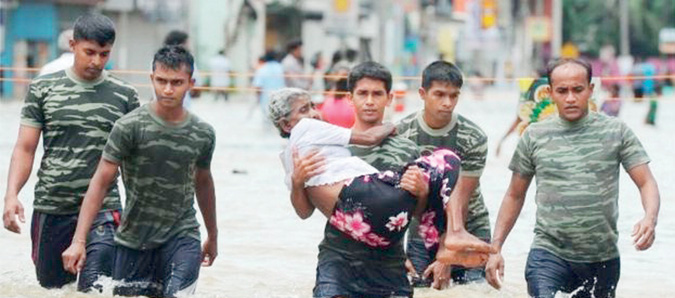
Over the desolate watery wastes,
Dulling the glow of the fabled Gem,
There opens a rainbow of opportunity,
For the peoples North and South,
To not only meet and greet,
But build a rock-solid bridge,
Of mutual help and solidarity,
As one undivided suffering flesh,
And we are moved to say urgently-
‘All you who wax so lyrically,
Of a united nation and reconciliation,
Grab this bridge-building opportunity.’
By Lynn Ockersz
-

 News3 days ago
News3 days agoOver 35,000 drug offenders nabbed in 36 days
-

 Features1 day ago
Features1 day agoFinally, Mahinda Yapa sets the record straight
-

 Business5 days ago
Business5 days agoLOLC Finance Factoring powers business growth
-

 News2 days ago
News2 days agoCyclone Ditwah leaves Sri Lanka’s biodiversity in ruins: Top scientist warns of unseen ecological disaster
-

 News5 days ago
News5 days agoCPC delegation meets JVP for talks on disaster response
-

 News5 days ago
News5 days agoA 6th Year Accolade: The Eternal Opulence of My Fair Lady
-

 News3 days ago
News3 days agoRising water level in Malwathu Oya triggers alert in Thanthirimale
-
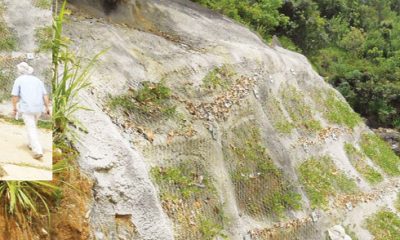
 Features4 days ago
Features4 days agoThe Catastrophic Impact of Tropical Cyclone Ditwah on Sri Lanka:













